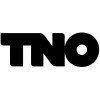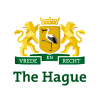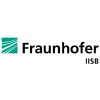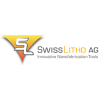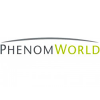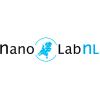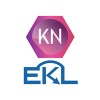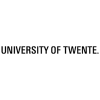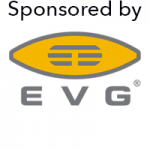 The Welcome reception on Monday 21
The Welcome reception on Monday 21
On Monday evening 21 September there will be a welcome reception at the conference venue The World Forum.
The conference dinner Madurodam on Wednesday 23
The conference diner will be held in Madurodam (in the vicinity of the conference venue) on Wednesday 23 September, where you can discover Holland’s Highlights & Heritage. (You will go on a journey through the Netherlands where the miniatures and their stories come to life.)
PEACE PALACE and the JUST PEACE FESTIVAL
Palace tour: (only on sunday september 20) Are you interested to see what you can find behind the impressive façade of the Peace Palace? On certain weekends the Peace Palace is open to the public. After a tour through the Visitor Centre you can then join a guided tour inside the Peace Palace. A guide will tell you about the building and the institutions housed in the Palace. The tour will bring you through the Great Hall of Justice, the Small Hall of Justice, the corridors and the Japanese Room, and will give you an overall impression of the most beautiful parts of the palace.
Unfortunately, the gardens are not open to the general public. But once a month, on Saturdays, they offer guided tours through the gardens.
Guided tours ‘Peace Palace by night’ During the Just Peace Festival the Peace Palace will be illuminated in a special way! Visit the Peace Palace during the evening (18-20 September) with a guided tour.
The tickets (12 € per person) for the ‘Peace Palace by night’ and other tours to the Palace (9.5 €) or its garden (7.5€) can be booked via the form on the website: www.vredespaleis.nl
Special event during the “Just peace festival”
Dance Show “Grenzeloos” (Monday, 21 September)
Its the first time, that the new educational show “ Grenzeloos” of the two companies “Holland Dance” and “De Dutch don’t dance” is performed in the beautiful garden of the Peace Palace.
Door opening: 18 00
Beginning of the show: 18 15, one hour of duration;
During this outdoor performance, the audience is sitting on the stairs or in the grass. There is only a limited amount of chairs available, cushions can be bought.
In case of rain, the performance will be given in the academy building (“Academiegebouw”).
Entrance fee: 12.50 €
Don’t forget your passport or ID!
Don’t miss the following museums in The Hague:
Escher in het Paleis
Escher in Het Paleis is a permanent exhibition dedicated to the world-famous artist M.C. Escher, whose art startled millions of people all over the world. The collection is housed in the former Winter Palace of Queen Mother Emma of the Netherlands. It is the only public building in The Hague where the original royal ambience of a palace has been maintained.
Mauritshuis
After a two-year renovation, the Mauritshuis is reopened. The renovated Mauritshuis is now twice as large, with an underground expansion into the building on the other side of the street.
The Mauritshuis is home to the very best of Dutch Golden Age painting. The compact, yet world-renowned collection, is situated in the heart of The Hague, right next to the government centre. Masterpieces such as Vermeer’s Girl with a Pearl Earring, The Anatomy Lesson of Dr. Nicolaes Tulp by Rembrandt, The Goldfinch by Fabritius and The Bull by Potter are on permanent display in the intimate rooms of this seventeenth-century monument.
More than two hundred top works from Dutch and Flemish masters are on display in the historic yet intimate interior, with its silken wall covering, sparkling chandeliers and monumental painted ceilings. Genre paintings by Jan Steen, landscapes by Jacob van Ruisdael, still lifes by Adriaen Coorte and portraits by Rubens offer a rich and varied representation of the best of seventeenth-century Dutch and Flemish painting.
Gemeentemuseum Den Haag
Expected from Sep-19-2015 until Feb-07-2016
Famous names like Viktor & Rolf, Iris van Herpen and Jan Taminiau have placed the Netherlands firmly on the map as a country of idiosyncratic fashion talent. These and other Dutch designers attract international praise. High time, therefore, for an Ode to Dutch Fashion at Gemeentemuseum Den Haag, which has one of the most important fashion collections in the world. Never before has such a major exhibition showcasing the history of Dutch fashion been presented in the Netherlands.
Anyone who saw King Willem-Alexander’s coronation cannot fail to recall the dazzling blue creation – a Jan Taminiau design – worn by Queen Máxima. The Netherlands is home to a huge amount of creativity, and this has certainly not gone unnoticed abroad. Designers with their own strong signature have been particularly successful at rising above the crowd and gaining a strong reputation. Gemeentemuseum Den Haag is proud to present a well-deserved Ode to these designers this autumn, and to show how fashion has developed in this country since 1900.
Following international trends
In the seventeenth century the Dutch elite liked to appear in portraits dressed in dignified black. However, a closer look reveals more than fifty shades of black: from ‘crow black’ to ‘coal black’ and ‘glossy black’. From that time until well into the twentieth century the Dutch followed international fashion, sometimes adapted to their own taste. In the eighteenth century, for example, a great deal of blue silk was worn in the Netherlands, while the French preferred brighter colours like emerald green or lemon yellow. Fashion consciousness grew in the nineteenth century. The Dutch closely followed the latest international trends and the arrival of the luxury department store Hirsch (from Brussels) helped prompt the emergence of a real luxury goods industry towards the end of the century.
Idiosyncratic design
The first fashion designers to work under their own name in the Netherlands, like Joan Praetorius in the 1920s, continued to follow the lead of Parisian couture for a long time. Praetorius’ designs were admired for their ‘clean lines’ and also their ‘Dutch simplicity and quality’. After the Second World War a whole generation of Dutch designers emerged, including Max Heymans, Dick Holthaus, Frans Molenaar, Fong Leng and Frank Govers. In the 1960s they turned their attention away from Paris, developing their own distinct style, featuring lots of black-and-white, a keen eye for line and shape, and also explosions of colour and idiosyncratic touches. From then on, fashion design courses in the Netherlands, particularly in Arnhem, focused on concept. This resulted in a host of creative designers, who put conceptual Dutch design firmly on the international map in the 1990s.
Major annual fashion exhibition
Almost ten years ago the Gemeentemuseum presented an exhibition entitled Fashion NL about the young designers of the time. Since then, fashion has been a recurring theme in the annual schedule of exhibitions. ‘Gemeentemuseum Den Haag has a long tradition of presenting fashion, with a clear emphasis on Dutch fashion’, director Benno Tempel explains. ‘Frans Molenaar had a solo exhibition here in the 1980s, for example. But we also frequently work with major foreign fashion houses. This took quite a lot of effort in the beginning, but now they know us and come to us themselves. We recognise the importance of fashion and that is reflected in our exhibitions policy.’






